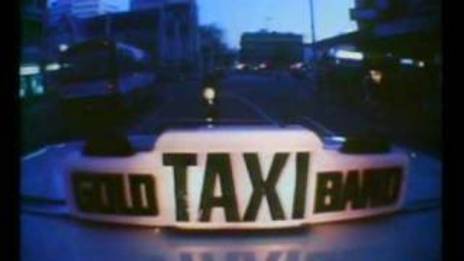AudioCulture
The noisy library of New Zealand music
Te pātaka korihi o ngā puoro o Aotearoa
The Pin Group
Their 17 months of active musical life had hardly been high profile to start with. The Pin Group’s Roy Montgomery (guitar, vocals), Desmond Brice then Ross Humphries (bass, vocals), and Peter Stapleton (drums) practised lots, but played barely a dozen shows in the Garden City.
As one of the groups Roger Shepherd drew on first for his fledging indie label Flying Nun Records, the elusive trio, who added new members Mary Heney and Peter Fryer in their final months, had produced three increasingly better realised records, culminating in the early label highpoint The Pin Group Go To Town EP in May 1982. By which time, the band had already gone their separate ways.
The Pin Group myth rests almost entirely on those three small-run indie records.
The Pin Group myth rests almost entirely on those three small-run indie records. That and the musical afterlife of Montgomery as an expansive, guitar and reverb driven instrumentalist and minimal vocalist, and drummer Stapleton’s prolific string of left field groups, including Scorched Earth Policy, The Terminals (with Humphries), Dadamah (with Montgomery) and more recently, Eye.
Long Night
Which is the way they wanted it. Distant, unsettling and unexpectedly electrifying like a European art house film. Not even the name revealed much. (In mathematics, the pin group is a certain subgroup of the Clifford algebra associated to a quadratic space.)
The Pin Group’s first single, ‘Ambivalence’ backed with ‘Columbia’, dispensed with information entirely. Its black on black Ronnie van Hout screen-printed cover and labels gave nothing away on the new single’s release in late 1981. The mystery deepened as the band routinely left their names off the records.
The Christchurch trio followed their debut 45 barely a month later with the Humphries-sung ‘Coat’ b/w ‘Jim’. The sleeve this time was yet another van Hout print of a kiwifruit sliced in half with the colour differing on each sleeve. The names of the songs were stamped on the records using a child’s lettering set, much like a bootleg release.
Both singles made the lower reaches of the pop charts. ‘Ambivalence’ peaked at No.36 in the NZ Singles Chart for a week in October 1981. ‘Coat’ stayed a week longer in November 1981, but never climbed higher than No.38. The records sold mainly in Christchurch, indicating the rising and responsive post-punk scene in the city, which was growing through early week dates at the DB Gladstone.
Keen to improve upon the indifferent sound of their initial recordings, the new expanded Pin Group formed, with Mary Heney (the drummer in 25 Cents, another Flying Nun act) playing guitar and singing, and former Vacuum viola player Peter “The Body” Fryer. A new studio was needed to improve their recorded sound and EMI studios, a long-lived and professional sound recording facility, by now located in Lower Hutt, was chosen.
The five-song record that The Pin Group made there in December 1981 was full of the group’s evocative power and mood. But The Pin Group Go To Town is as short on information as its predecessors, although this time the song titles were included on the EP’s inner label and a number of what looked like Slavic names were scrawled on the other label. The EP, with its van Hout cover of a suspected UFO, was intriguingly numbered as FN1967.
Roy Montgomery headed overseas in mid-1982 and The Pin Group folded. And that’s where it ended for a good long while.
Roy Montgomery headed overseas in mid-1982 and The Pin Group folded. And that’s where it ended for a good long while. The records soon disappeared from circulation.
As Flying Nun Records began compiling their acts, first with the landmark 1983 collection Tuatara, and later in the decade with In Love With These Times, The Pin Group were missing. Only one new song appeared in the 1980s on Failsafe Records' 1984 Christchurch compilation tape, Accident Compilation. ‘Low Rider’ was a stripped down cover of War’s 1975 USA R&B No.1 and pop chart No.7 hit single, captured live at the DB Gladstone by soundman Fred Kramer.
The foldout band rundown that came with the tape used an intriguing image of two leather-clad women whipping each other on the dance floor in front of the group.
Roy Montgomery returned to Christchurch from his travels and in 1984 released the similarly mysterious ‘Suzanne Said’ b/w ‘Trial By Separation’ as The Shallows. Dedicated to the recently deceased Christchurch scene figure, Suzanne Irvine, The Shallows single had all the brooding power of The Pin Group in its grooves.
Montgomery co-opted Pin Group guitarist-vocalist Mary Heney for The Shallows’ May 1985 recording session at Christchurch’s Tandem Studios, and added Mick Dawson (as M.S Agro), another early 1980s Christchurch figure, on keyboards. Tellingly, it was EMI’s seasoned engineer Frank Douglas who mastered the single in Wellington. Douglas had been responsible for the vastly improved sound of The Pin Group’s EP.
On the back of Roy Montgomery’s late 1980s and 1990s musical resurgence, The Pin Group put together a one off single for US indie Siltbreeze Records in 1992, which revisited Montgomery and lyricist Desmond Brice’s ‘Coat’ and added as the flipside a frenetic take on Red Crayola’s ‘Hurricane Fighter Plane’, a Pin Group set staple.
Montgomery then retooled ‘Long Night’ for a double single release on Siltbreeze in December 1996. “The lyrics seem a little overwrought. But that shit still happens to people. Christchurch is a strange place and these were weird times,” Montgomery wrote in the sleeve notes.
It wasn’t until 1997 that The Pin Group got the reissue they deserved.
It wasn’t until 1997 that The Pin Group got the reissue they deserved when Siltbreeze, home to The Dead C, Alastair Galbraith, Gate, Queen Meanie Puss, The Terminals and later reissues of The Dead C, The Axemen and Vacuum, gathered together the four existing records and ‘Low Rider’ for a CD release that utilised Ronnie van Hout’s ‘Coat’ cover for its sleeve.
The art generated an outing for The Pin Group in August 2010 at Victoria University’s Adam Art Gallery in Wellington. The music themed exhibition presented Ronnie van Hout’s Christchurch art and film from 1981 to 1982 in a downstairs arm of the gallery.
The screen-printed canvases from The Pin Group’s ‘Jim’ b/w ‘Columbia’ and The Pin Group Go To Town and the bright base images of Spock, Captain Cook and The Milky Bar Kid from live show posters were exhibited, together with five films that played out on the surrounding white walls.
There was the misshapen sense of the original spaces of encounter in that long gallery. The way the canvases rested at odd angles against the walls, combined with the film of The Pin Group and The Gordons, evoked a domestic environment of bedroom practice rooms and night-time performance and a connected life beyond the living room. It was easy to imagine the musicians sitting on couches watching television, listening to music and talking, as they and their friends would have done.
In 2012, Bruce Russell (of The Dead C and Xpressway Records), a long time advocate of the group, placed ‘Jim’ first on his epoch-defining compilation, Time To Go - The South Island Psychedelic Moment 1981-1986 (Flying Nun). The accompanying sleeve note essay 1981: Godzone’s freaked-out Year Zero contained one of the first intelligent attempts to place the South Island’s indie music of the era in a broader social, cultural and political context.
Russell went one better with Ambivalence, a full 2012 revisiting of The Pin Group’s work, compiled and annotated for the resurgent Flying Nun Records. The track listing echoed Siltbreeze’s release for the resulting vinyl album and added an eight-song live CD from The Pin Group’s July 4, 1981 Gladstone show. The previously unissued songs ‘Assassin’ and ‘Blood of Christ’ are lesser works more than compensated for by the undeniable live power of ‘Ambivalence’, ‘Power’, ‘Coat’ and ‘Hurricane Fighter Plane’.
In reusing van Hout’s powerful black on black screen print from the trio’s first single as the cover, Russell attempted to “remarry the sonics of The Pin Group with Ronnie’s "silver factory" visual vibe of Brillo boxes and black helicopters.” Despite the music now being fully present, The Pin Group and their time remained where it always had been, in the background, just out of focus.
Power
The story of The Pin Group began in November and December 1980, when the English-born Roy Montgomery, veteran of Christchurch post-punk groups The Hangsters, Compulsory Fun and the Wire-influenced Murder Strikes Pink, linked up with would-be bass player and accomplished writer Desmond Brice. Former Vacuum and Victor Dimisich Band drummer Peter Stapleton completed the trio and brought another lyricist into the fold, together with a pounding drum style and a wide-ranging record collection that would influence the new group’s sound.
When the new trio debuted in mid-1981, it was at the notorious DB Gladstone, an inner city pub venue.
Montgomery's formative groups had played mostly in Christchurch halls in 1980, while Stapleton’s Victor Dimisich Band stepped out infrequently as a support act. But when the new trio debuted in mid-1981, it was at the notorious DB Gladstone, an inner city pub venue, which had taken to running groups six nights a week.
Brice’s rudimentary bass playing and erratic time keeping soon fell short of the job. Ross Humphries, who’d sung in Compulsory Fun, and played bass in Murder Strikes Pink, quickly replaced him. Brice had written some of the group’s best lyrics and was happy to let the new formation carry on using them.
“The addition of Ross Humphries on bass and vocals proved to be the missing link, his muscular yet minimally melodic playing was to mesh perfectly with Montgomery’s determined droning raga-rock guitar and Stapleton’s white-knuckled martial hammering,” Bruce Russell would later write.
Undeterred, Desmond Brice reviewed the third date of The Pin Group’s mid-May 1981 DB Gladstone run with The Volkswagens and 25 Cents. “[The] most challenging and cerebral of the three were The Pin Group, the most recent and most sophisticated expression of Roy Montgomery’s capricious vision,” Brice declared in RipItUp. He pointed to “six brand new epistles from the oracles of personal despair”, an a capella version of Jim Reeves’ ‘He’ll Have To Go’ and a live take on Red Crayola’s ‘Hurricane Fighter Plane’.
In Have You Checked The Children? Punk and post punk music in New Zealand, 1977-1981 (2001), Christchurch music historian Wade Churton makes the case for The Pin Group as being socially and musically part of a wider grouping of Christchurch bands in 1981 and 1982. It was a nexus that took in female garage punkers 25 Cents and the Velvet Underground-influenced The Volkswagens, who both practised at Peter Stapleton’s house.
Shared musical influences included US garage and psychedelic rock of the type being recycled in the late 1970s and early 1980s on compilations such as Pebbles, How Was The Air Up There? and the reissued Nuggets. In London in 1978 and 1979, the WEA-funded Radar Records were also re-releasing The Electric Prunes, Thirteenth Floor Elevators, The Shadows Of Night, early Pere Ubu and arty Texans Red Crayola alongside new records from Richard Hell and The Voidoids, Elvis Costello and the Attractions and Nick Lowe.
Peter Stapleton in particular was an avid record collector. He’d been sending overseas for new LPs and reissued records since the mid-1970s and was familiar with the three record shops run by influential fans such as Roger Shepherd at the Record Factory near Christchurch’s central square and The Newtones’ Tony Peake further out at the Canterbury University bookshop. Roy Montgomery managed the third shop, an inner city EMI outlet.
New Zealand’s record shelves weren’t entirely bare of locally pressed or commercially imported records either. Albums available to NZ record shops in 1979 and 1980 included the full John Cale catalogue, The Velvet Underground’s Loaded and White Light, White Heat, The Stooges’ first two records, Pere Ubu, The Electric Chairs, the best of the new British punk and new wave, Wire, Can, Hawkwind, Kraftwerk, MC5, Patti Smith Group, a diverse collection of reggae albums, and the near full Lou Reed catalogue. By 1981, the list added a surprisingly full range from the British post-punk boom.
No listing is available for singles, but judging from the adventurous nature of the New Zealand pop charts from 1980 into 1982, a large selection of the rising sounds were released locally in that form as well.
Early reviews often compared The Pin Group’s sound to Joy Division.
Early reviews often compared The Pin Group’s sound to Joy Division. The Manchester band was huge in New Zealand in the early 1980s, placing their singles ‘Love Will Tear Us Apart’ and ‘Atmosphere’ and debut album Unknown Pleasures at No.1 in the charts in mid to late 1981. Closer and Still both made No.3 on the album charts, while the single for ‘Transmission’ charted at No.2. That success and the suicide of Joy Division singer Ian Curtis cast a formidable shadow over any group with a similar sound.
“Christchurch was really Anglophile. The NME was like a bible," Peter Stapleton told Auckland student radio station bFM in 2012. "Probably one of the reasons we became popular in Christchurch was the connection with the English post-punk thing and the Joy Division thing with Roy’s voice, which was deep.”
Roy Montgomery remembers. “When I turned up to work one day, someone had sprayed Roy Division on the front of the EMI Shop. I just laughed and thought ‘that’s really funny,’ I wish I’d thought of that. The reality is that some people’s voices are enough to tell a story and enough to animate a song, but they don’t go much further than that and the rest depends on what you build around them.
“It was the inspiration of the content that drove the way it was delivered, [it wasn’t] taken directly from someone else’s singing style. It was more an intersection between the topics of the song and how you would sing those. There didn’t seem to me to be much you could do to turn the fairly bleak types of things that Desmond Brice was coming up with into some sort of cabaret, so it was going to come out as something at best that was getting close to the sort of thing Jim Morrison might do. But it was never meant to be anything else.”
Another shared memory is the DB Gladstone in late 1980 and 1982. In February 1981, the venue’s bookers changed from the seasoned Jim Wilson to Rose Mitchell and Laura Stapleton, Peter’s sister. A range of Christchurch newcomers arose there: The Pin Group, 25 Cents, The Pedestrians, The Droogs, The Victor Dimisich Band, The Terraces, Desperate Measures, The Volkswagens, Ballon D’Essai, Mainly Spaniards and Drowning Is Easy, along with older post-punk acts The Newtones, The Playthings, Pop Mechanix, The Androidss and The Gordons.
While the older Christchurch acts were able to headline in their own right at the busier end of the week, the new groups clustered on three band bills early week and as support bands for touring post-punk groups from Auckland and Dunedin.
A Christchurch compilation album was mooted in RipItUp, intended to gather songs from the new groups at The Gladstone, including The Pin Group, The Solitudes, The Pedestrians, The Volkswagens, Ritchie Venus and The Blue Beetles and 25 Cents, mixed with slightly older acts like The Androidss, The Newtones, Bill Direen and The Playthings. The album faltered and was abandoned, although all but The Volkswagens released independent singles through 1981 and 1982.
By then, The Pin Group had already played two three-night runs at The Gladstone in early June with Art Decade and The Surge before returning in early July with The Clean.
In July 1981 The Pin Group recorded two singles at Christchurch’s Nightshift studios.
In July 1981 The Pin Group recorded two singles at Christchurch’s Nightshift studios with Arnie Van Bussel. Having seen many of the rising new Christchurch groups come through his shop and remain unrecorded, Montgomery was determined to capture The Pin Group on tape and record.
The 300-copy runs of both singles sold out quickly. But the band remained disappointed with the muddy, distorted sound and mix of ‘Ambivalence’ b/w ‘Columbia’ and ‘Coat’ b/w ‘Jim’ was considered too quiet after it was toned down in reaction to the first single.
Ronnie van Hout filmed the trio shortly afterwards. It begins with Desmond Brice reciting his written work over musical backing from The Volkswagens’ Jon Segovia (John Markie). The Pin Group are shown in a bare room with a naked light bulb hanging from the ceiling and worn, mottled carpet on the floor. The room’s reddish curtains are drawn. Roy Montgomery sings ‘Ambivalence’ as Ross Humphries bends his head low over driving bass and Stapleton’s linear drums sound off in the corner. Humphries then takes over for a vocally muted performance of ‘Coat’.
The Pin Group followed the September 1981 release of ‘Ambivalence’ with three live dates in mid-October at the DB Gladstone. Also on the bill were Hey Clint! and Mainly Spaniards. It was at one those shows that the leather-clad women whipping each other on the dance floor appeared, although it was in front of a bemused Mainly Spaniards, not The Pin Group.
Wade Churton recalled the show in 2007: “This gig was notable for the ‘porno shoot’, which happened during the Spaniards’ set. The band were playing and suddenly two very well-dressed girls no one knew were out on the floor dancing with each other. Then their friend began taking flash-photos.
“Judging from the camera and the people concerned, this looked like more of a silly fashion-cum-art-thing than anything else, since the girls’ eventual giggly toplessness and half-hearted ‘whipping of each other’ argued for less than professional pornographic talents. They probably just wanted to rub up against some ‘underground rock ’n’ roll ambience’ for a shoot.”
Churton also provides one of the best descriptions of the trio’s live performance style: “Complex, cyclic bass lines in tandem with raw scrubbed guitar chords were reverb-ed into enormity, while open ended whisper to a scream musical arrangements and intense rhythmic interplay between guitars and pounding drums were among The Pin Group’s key aural characteristics. There were also the two vocalists’ complementary, but very different voices adding tension, sometimes utilised in the same song. Little was ever said to the audience save for song titles.”
By then, The Pin Group’s live set contained a true oddity. ‘It’s Out Of My Hands’ by US garage band The Endd had reappeared in 1980 on Pebbles Volume 9. The original single dated back to 1966, where it was the B-side on a Seascape Records single from La Porte, Indiana. The top side was ‘Project Blue’.
The group’s next step would take them even further into the edgy 1960s as they added Mary Heney on guitar and vocals and Peter Fryer on viola. Heney’s voice and guitar added a nice layer of sound to The Pin Group “along the lines of the edge that Maureen Tucker gave to The Velvet Underground with her voice, a very simple but quite clear voice, unaffected.” Fryer’s viola gave them access to the type of sound John Cale contributed to the first two VU albums.
The Velvet Underground is an often quoted, but little understood influence on South Island indie groups of the time.
The Velvet Underground is an often quoted, but little understood influence on South Island indie groups of the time. New Zealand fans were aware of The Velvets from the get-go and although their records weren’t commercially available here for several years after 1975, Lou Reed’s catalogue was available throughout the 1970s. He toured New Zealand three times in that decade; the last shows were in 1977 (he next returned in 1985).
Informal conduits for the group’s influence, such as self-imported records, are not to be underestimated. Records don’t have to be widely available to have an influence, they just need to be heard – and music is often shared within tight groups of fans and musicians. The Velvet Underground albums were in New Zealand shops again as early as 1979, when the advent of punk prompted the New Zealand reissue of White Light, White Heat and Loaded. In 1980, Velvet Underground fans could pick up Reed’s double compilation, Rock ‘n Roll Diary (1967-1980), which included nine VU songs, and The Velvet Underground's Live ’69 (No. 31 in November 1980). By 1981, Velvet Underground and Nico and Nico’s Chelsea Girl were on local release.
Despite often being painted as isolated and internally driven, New Zealand’s indie music scene after punk had access to a wide range of influences. Artists with Warhol scene connections such as John Cale, David Bowie, Jim Carroll, Patti Smith, Jonathan Richman and Iggy Pop were well represented in NZ music stores. It was not a case of geographical and cultural isolation giving a limited choice. Deliberate choices were made from immediately available influences.
Steve Kerr nails it in his ground breaking 2006 essay Labels From The Post-Punk Periphery (in issue two of The National Grid). “Flying Nun (Records) is a classic example of New Zealand artists and audiences filtering the massive washes of British and American popular cultural product, and isolating certain themes and musics which are ‘real’ to them.”
What the Gladstone audience saw on December 21, 1981, when the five-piece version of The Pin Group performed their take on The Velvet Underground’s challenging ‘Lady Godiva’s Operation’ was no anomaly. It was a logical progression, based on a very real knowing of the Andy Warhol Factory scene in New York in the late 1960s.
Andy Warhol’s influence on art, film and music in New Zealand is widespread and profound. His fostering of The Velvet Underground and the downstream effect of that inspired patronage (one amongst many) on glam and punk rock and the kick-on influence on New Zealand groups is the most obvious aspect.
Punk’s access principle was indebted to him (anyone can be a star/ just do it film making/ creating controversial events for promotion) and Warhol’s diversity of creative output was a message many progressive punks picked up on by taking his vibe and world view out to other creative mediums.
By utilising Ross Humphries’ art school friend Ronnie van Hout as the group’s artist, The Pin Group showed a wider understanding that music scenes are never just about music.
Warhol’s ideas and film could be accessed in New Zealand. His and Pat Hackett’s Popism: The Warhol Sixties (1980) was available here and you could see Warhol films in provincial centres art friendly picture theatres.
By utilising Ross Humphries’ art school friend Ronnie van Hout as the group’s artist, The Pin Group showed a wider understanding that music scenes are never just about music.
Roy Montgomery to Auckland student radio station bFM: “There were graphic artists and designers (in Christchurch) and filmic imagery played a bigger part around the music scene, so if you were interested in music in Christchurch and some of your reference points were The Velvet Underground, then it wasn’t a long step to say ‘well, what goes with The Velvet Underground apart from what we hear?’ What do we see?
“Well, we see Andy Warhol and we see The Factory. Have we got any artists in the city who are influenced by pop art and who like Andy Warhol? Well yes, we have, we have quite a few of them.
“So the crossover in the terms of music and art seemed fairly natural at the time. If they weren’t in a band themselves they were there to document things and colour it up. And the joke became, don’t worry about the show, just get a copy of the poster.”
Wade Churton points to the fashion element of that influence: “The whole ‘Gladstone 1981’ thing was more sort of ‘Warholian’, with a dress-down-dressed-up ‘cool’ clientele (the guys dressed down and the girls dressed up). Lots of dark colours, they went with the music bar’s dim lighting and predominantly black-and-red interior.”
Roy Montgomery realised that the sign that hung over the record shop he managed might be good for more than his employment. He rang EMI studios in Wellington and booked The Pin Group for the December 1981 recording session that would finally capture the group’s sound the way they wanted it.
Early rumours had the quintet ready to record ‘Power’ backed with the more experimental ‘Flies On The Walls’. But when they emerged from the day long recording session, they had five glorious downbeat strummers with otherworldly words and sound down on tape – Power’, ‘Long Night’, ‘Ambivalence’, ‘When I Tell You’ and ‘A Thousand Sins’.
Roy Montgomery: “We were lucky that the guy who was there to record whoever-came-along had no biases. That was Frank Douglas. He was well into middle age, but he just said, ‘What do you want?’ We spent an ordinary working day from nine to five, recording and mixing and finishing them and walking out of there with the finished product.”
The Pin Group played one last show at Christchurch Arts Centre’s Jazz Cellar in March 1982 before Montgomery headed to England. The Pin Group Go To Town EP, released in May 1982, was typically information shy. The mysterious Slavic sounding names listed on the label would turn out to be actors from an obscure 1958 Polish movie called Ashes and Diamonds, directed by Andrzej Wajda.
Roy Montgomery didn’t get to hear the EP until Roger Shepherd sent a copy to him in England with a pile of the label’s other releases. The Pin Group guitarist soon pressed them into famous English DJ John Peel’s hands at a warehouse in Liverpool. “Here’s some stuff from New Zealand,” he told Peel, without identifying himself.
--
Peter Stapleton died in March 2020, of cancer. Mary Heney passed away in December 2020.
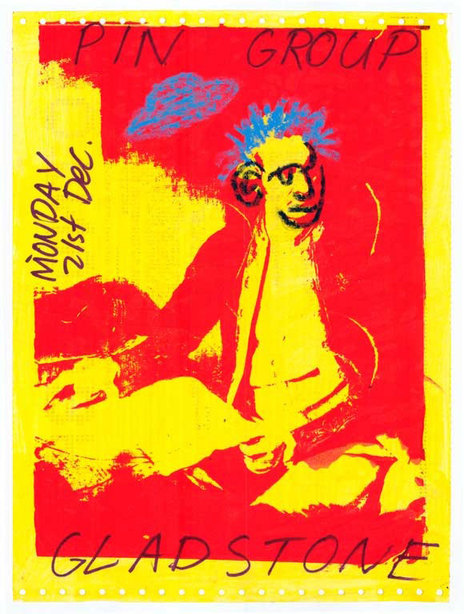
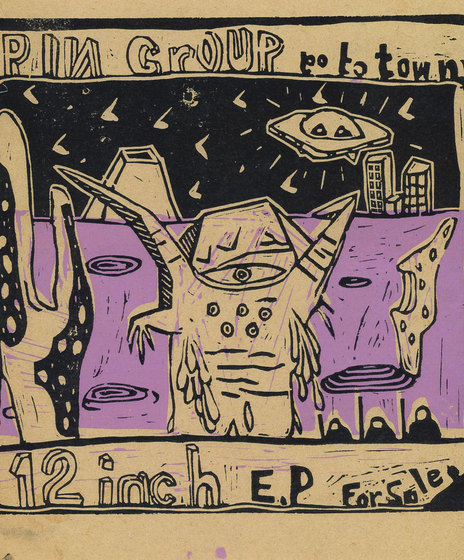
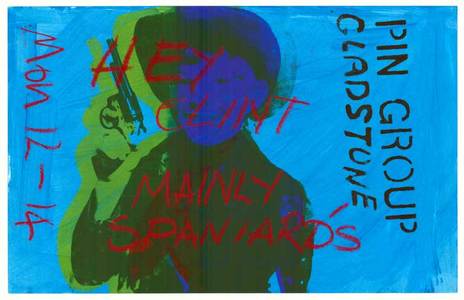
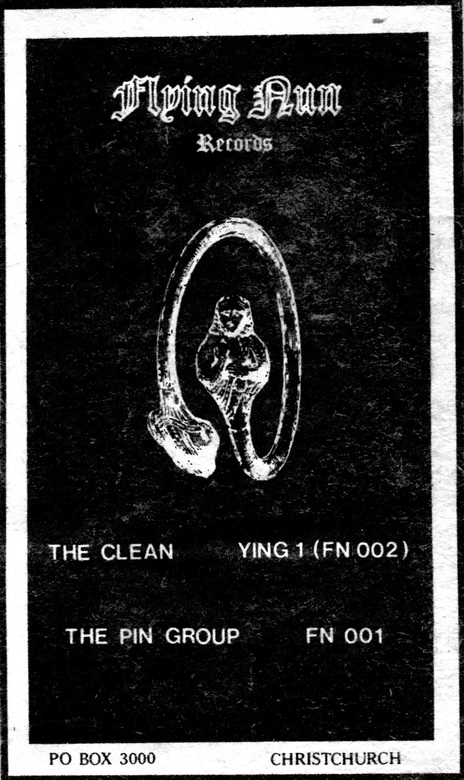
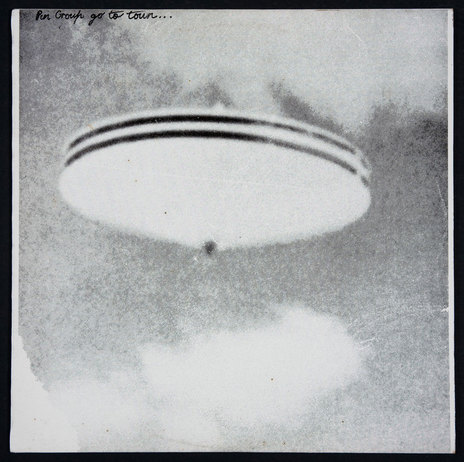
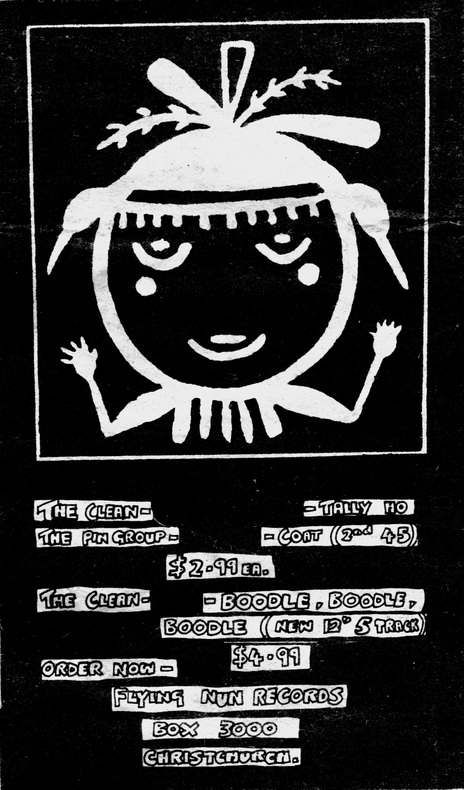
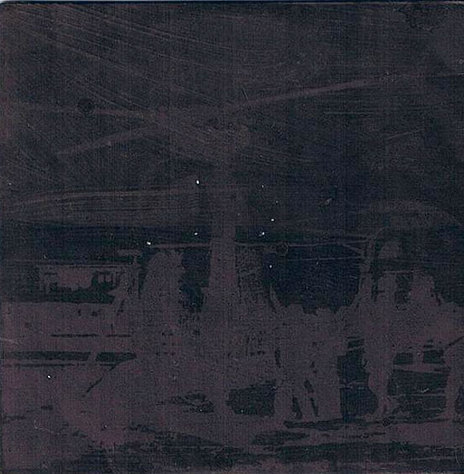
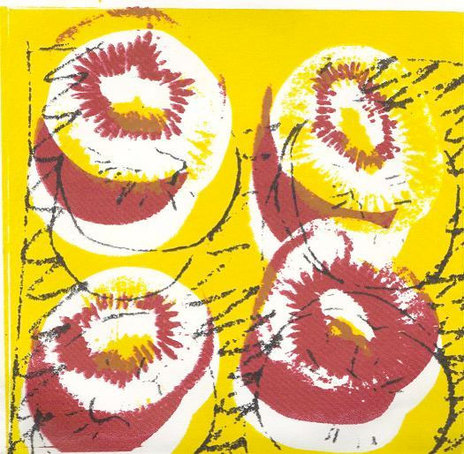
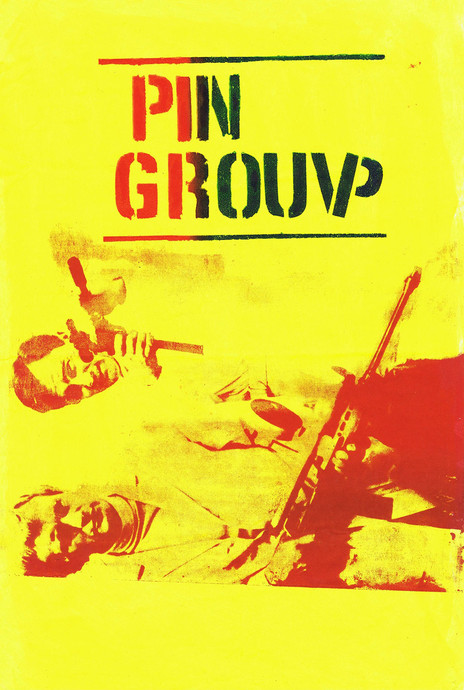
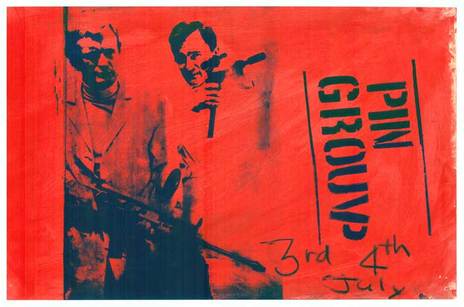
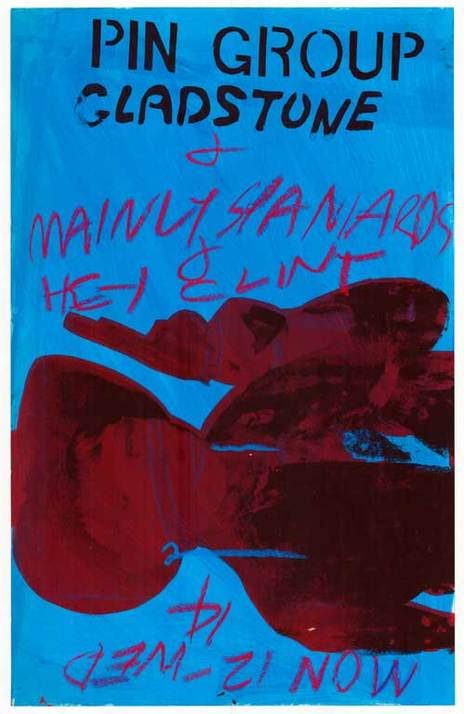
The Story of 'Ambivalence' - Roger Shepherd, 2022
Grant Smithies reviews The Pin Group’s Ambivalence compilation on RadioLive
RNZ Extended Play: Pin Group - Go To Town
Roy Montgomery - guitar, vocals
Desmond Brice - bass
Peter Stapleton - drums
Ross Humphries - bass, vocals
Peter Fryer - viola
Mary Heney - guitar, vocals
Truth and legend – The HMV and EMI recording studios and pressing plant
Roy Montgomery is a senior lecturer in environment, society and design at Lincoln University.
Visit our sister site
NZ On ScreenMade with funding from
NZ On Air